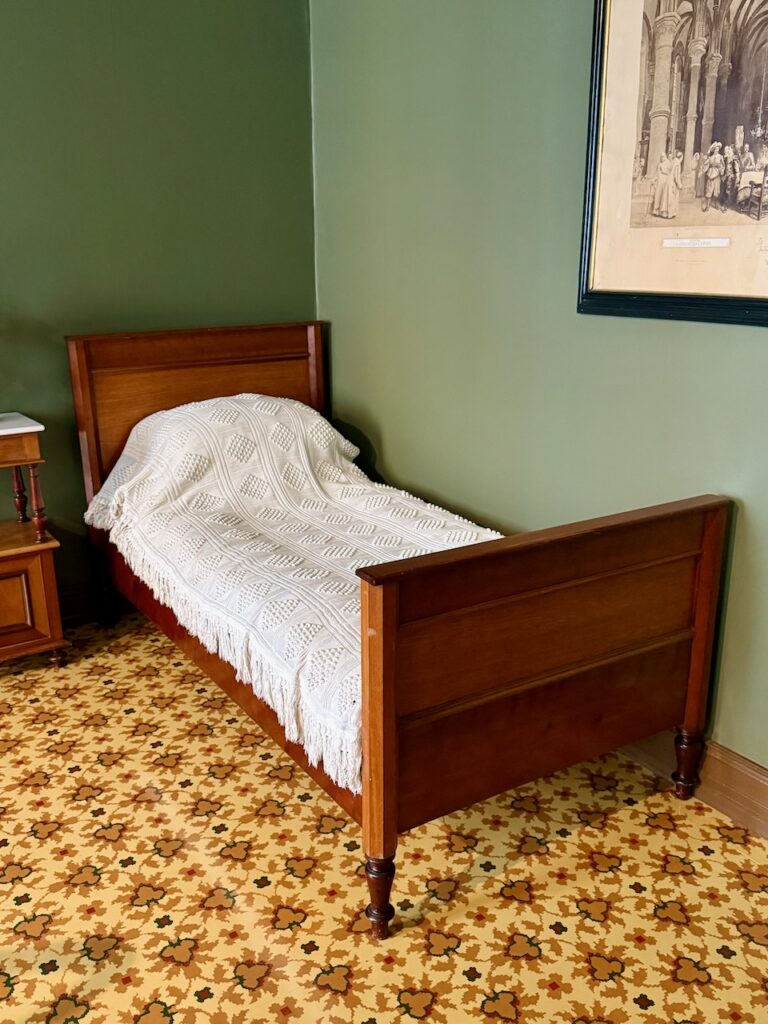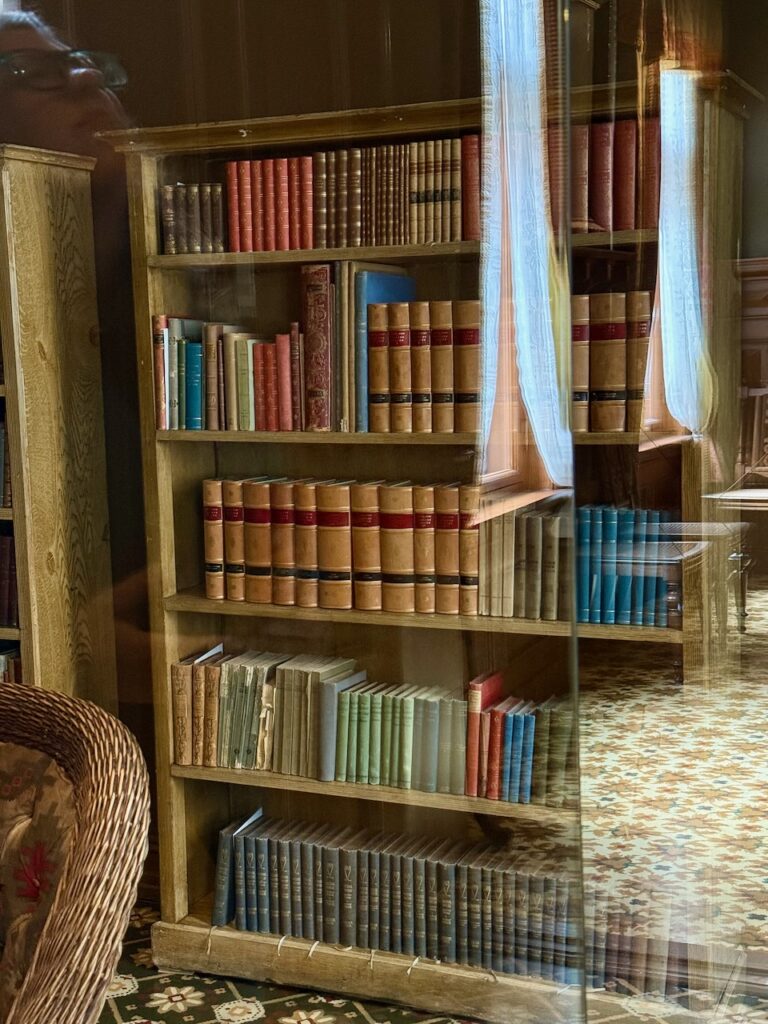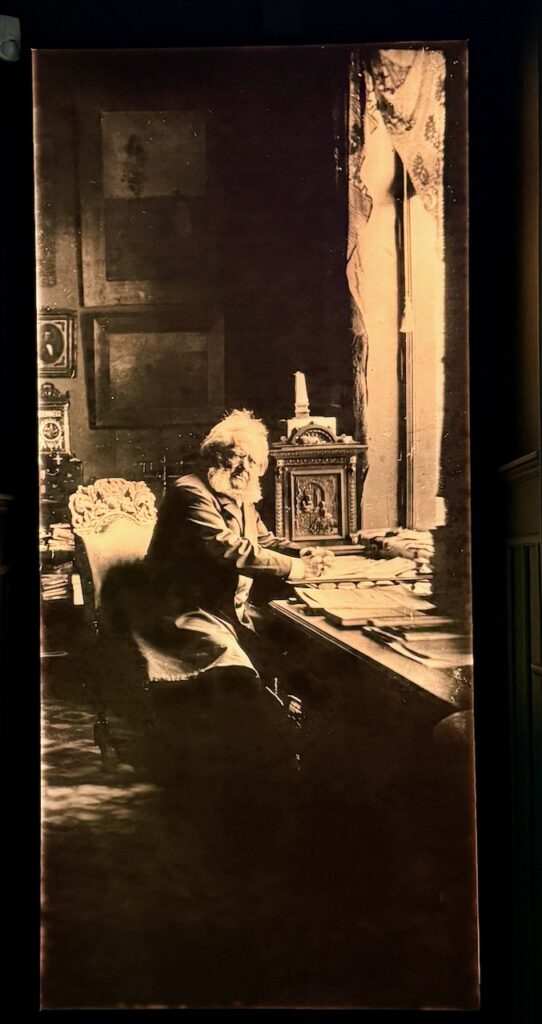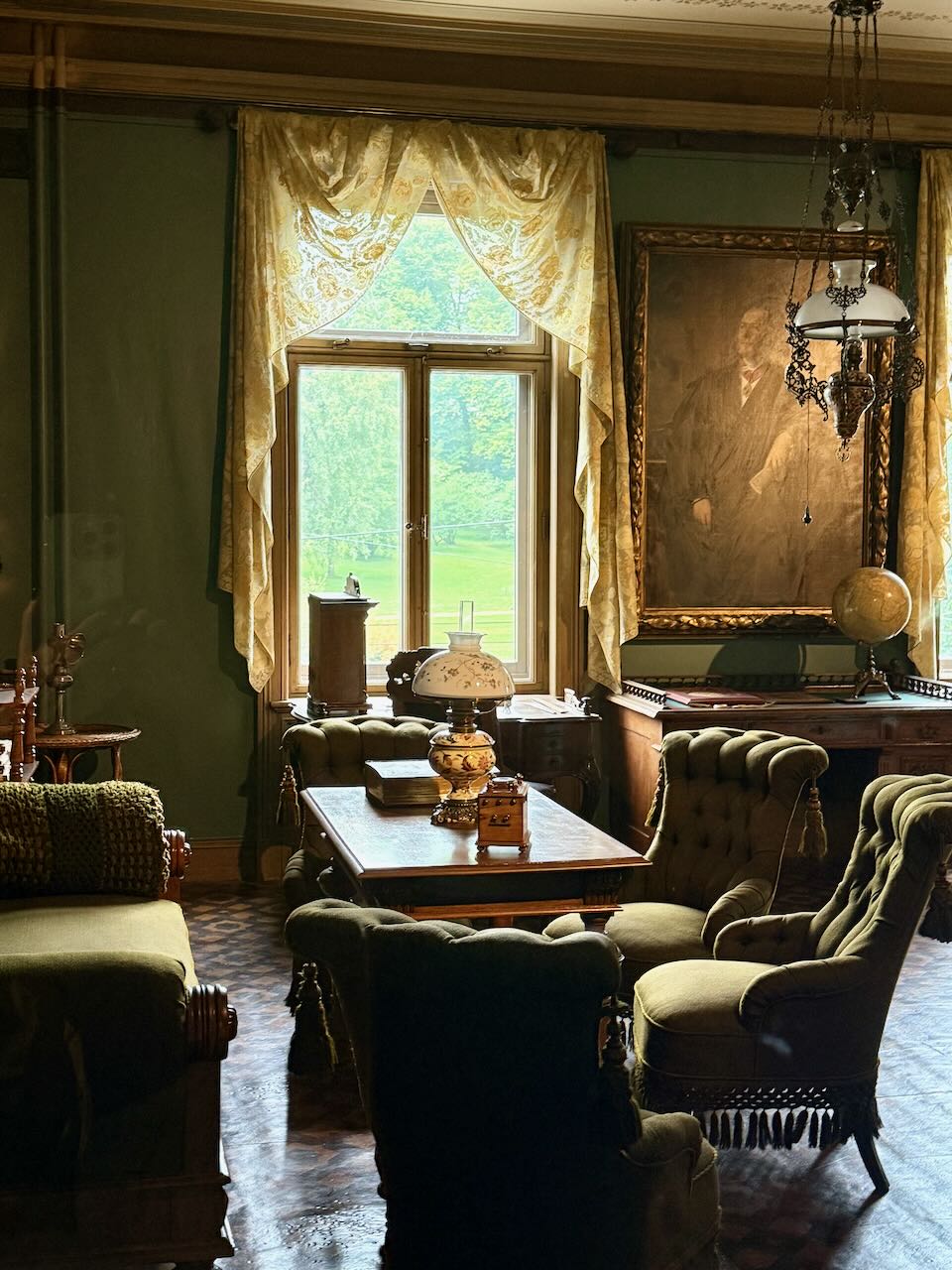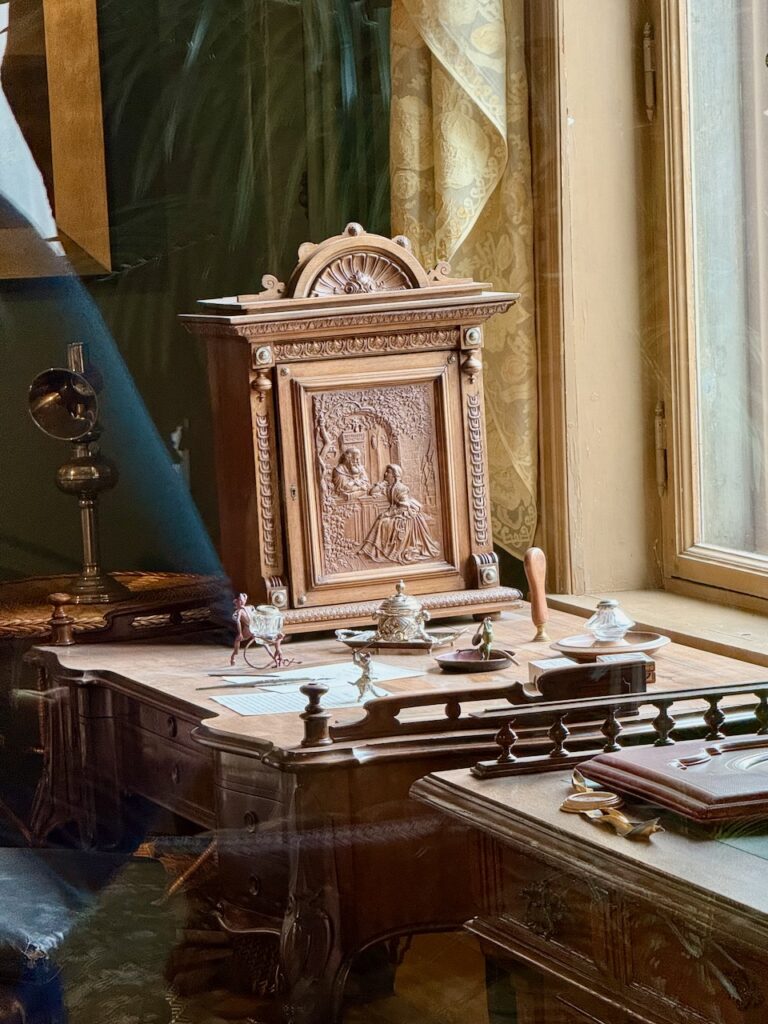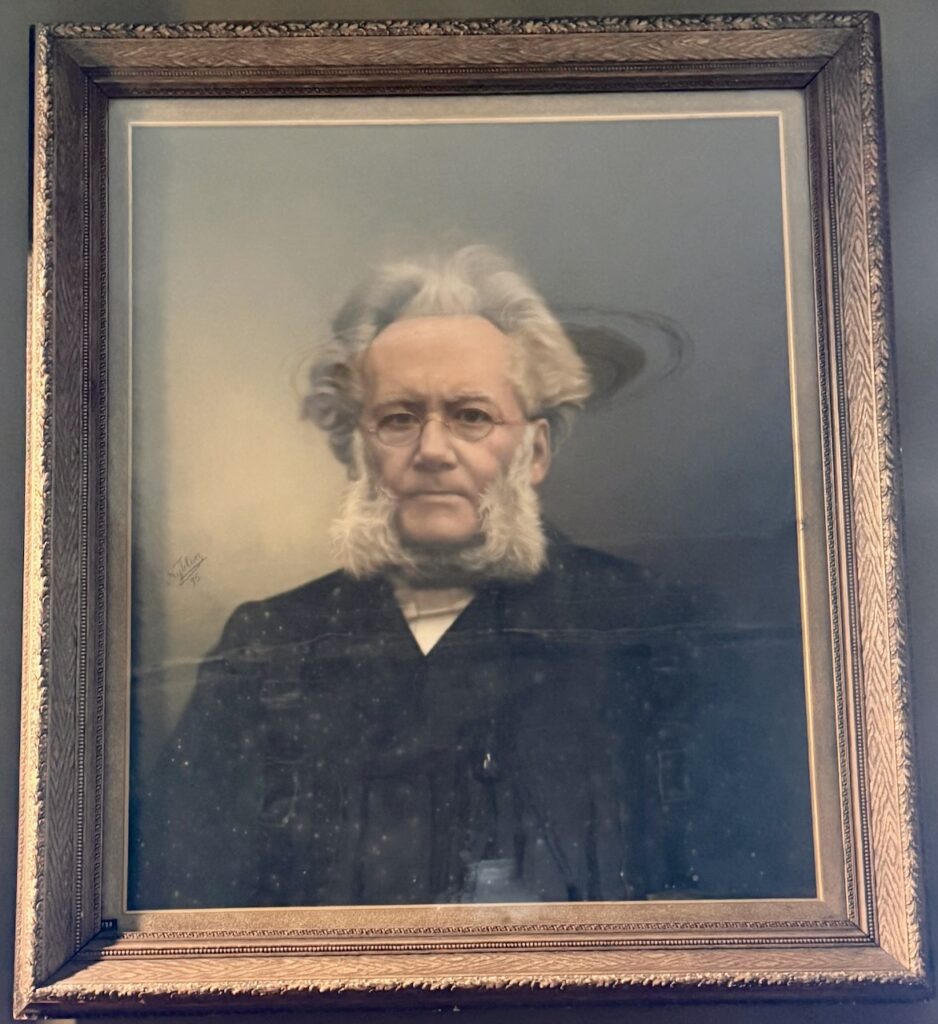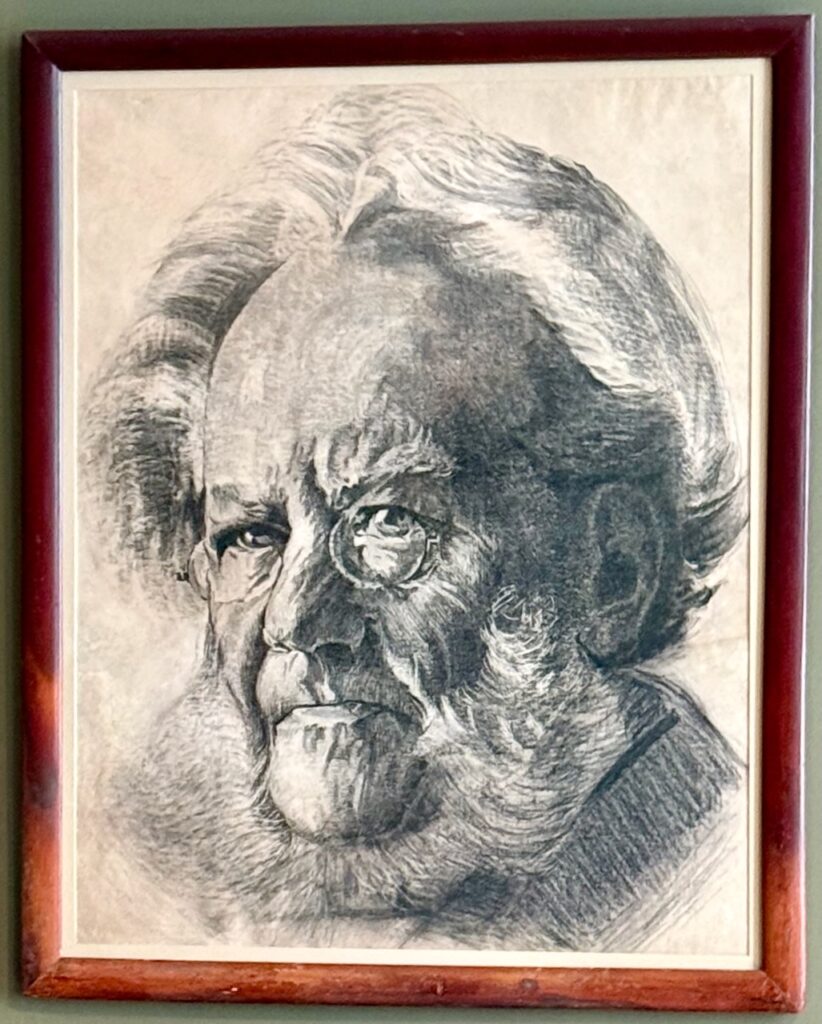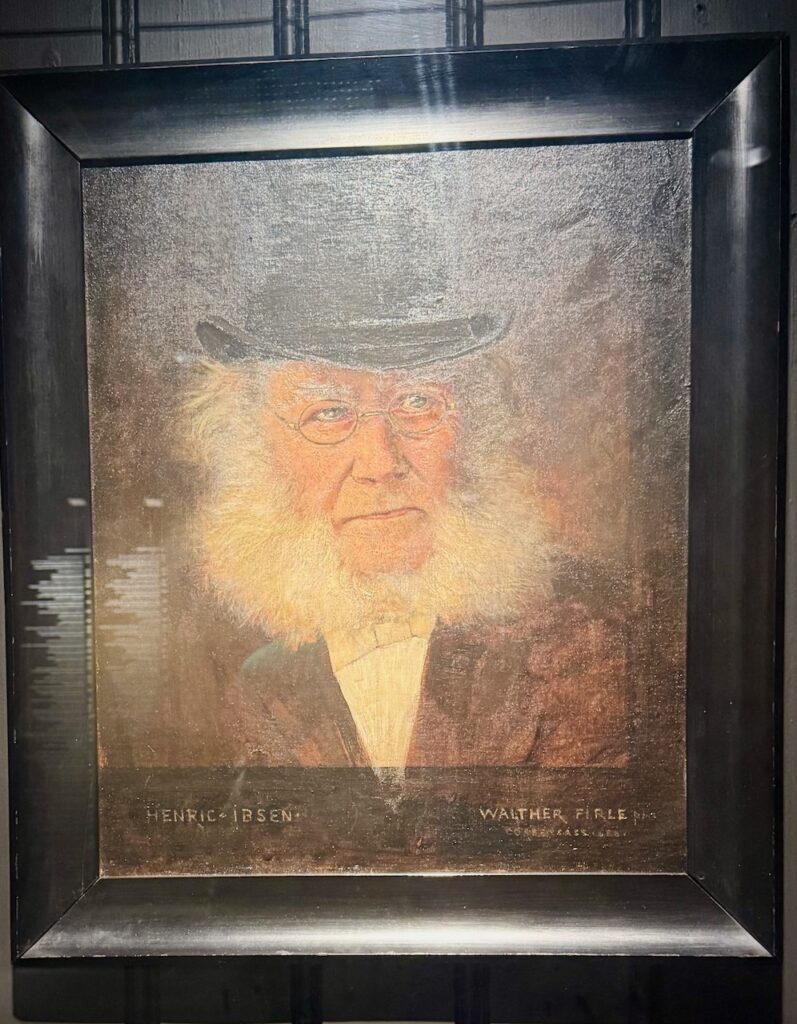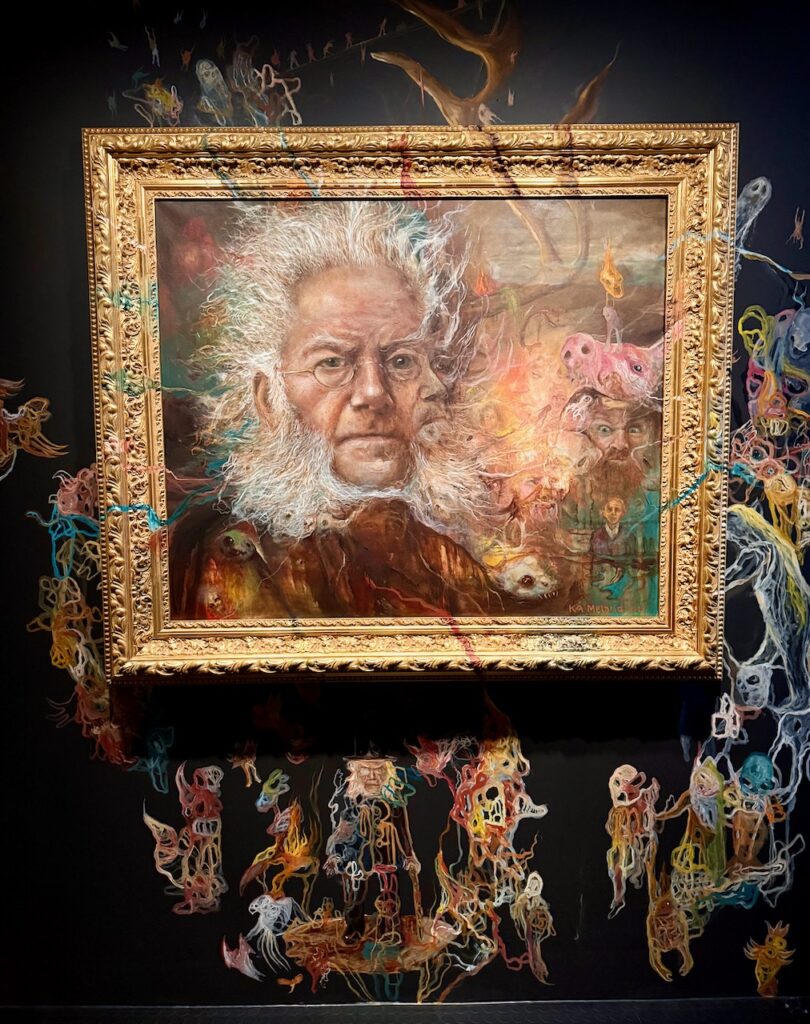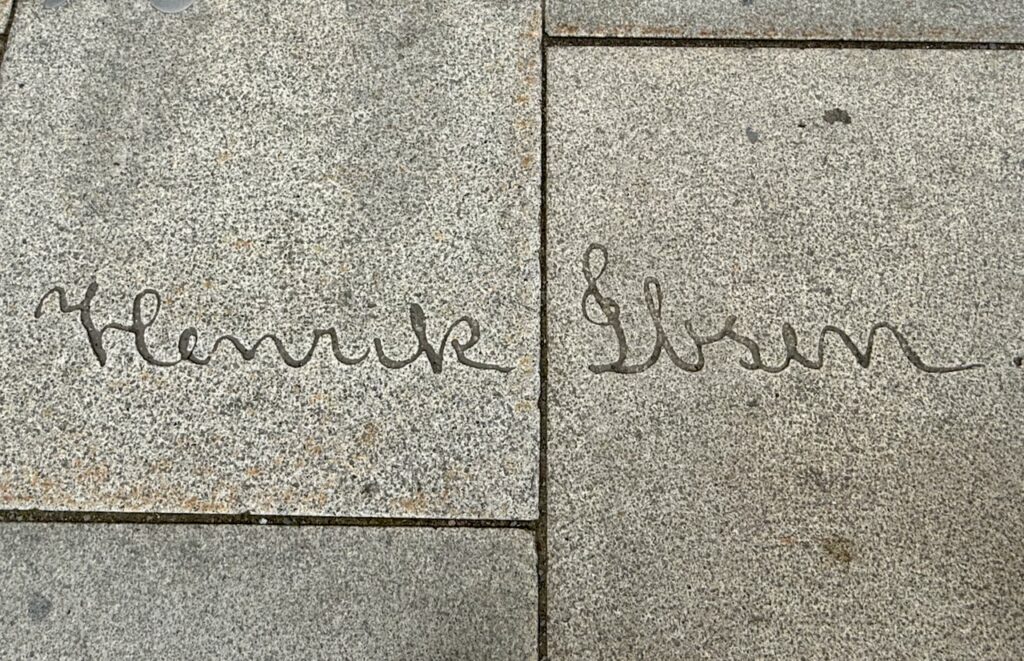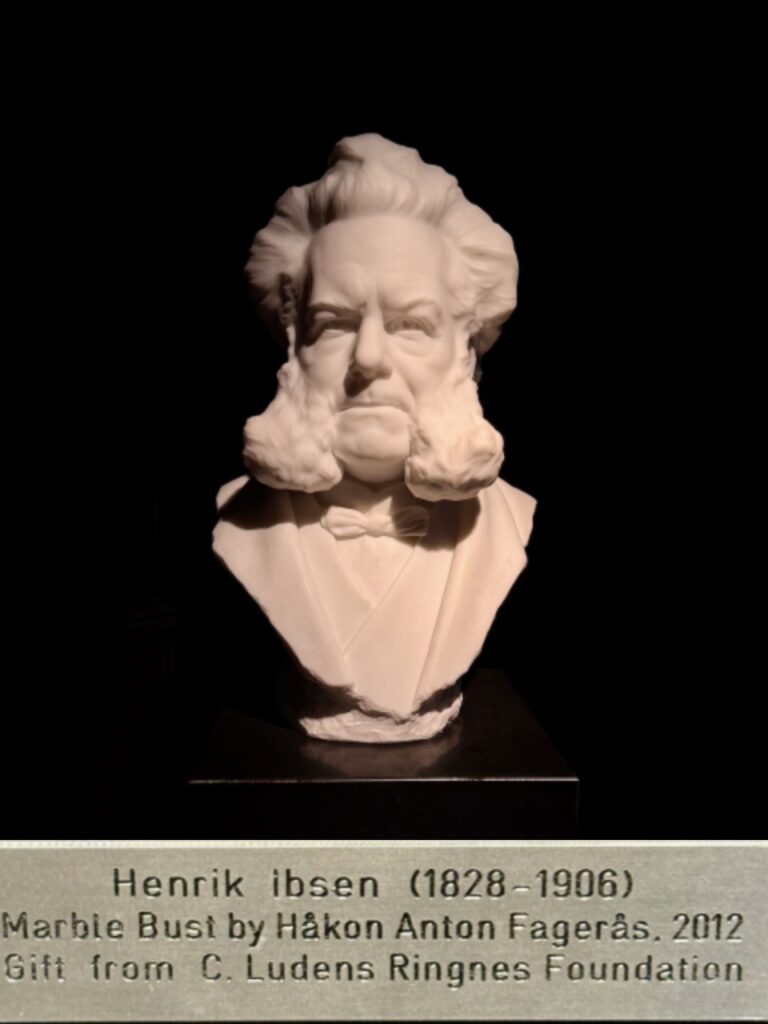High winds and choppy seas prevented us from docking at our first scheduled port on this trip. Having an extra day in Oslo, Norway, allowed us to visit the Henrik Ibsen Museum, the restored last home of Norway’s best known and most revered literary figure. Henrik and his wife Suzannah lived here from 1895 until their deaths (Henrik’s in 1906, Suzannah’s in 1914), and Henrik wrote his last two plays—John Gabriel Borkman (1896) and When We Dead Awaken (1899)—here.
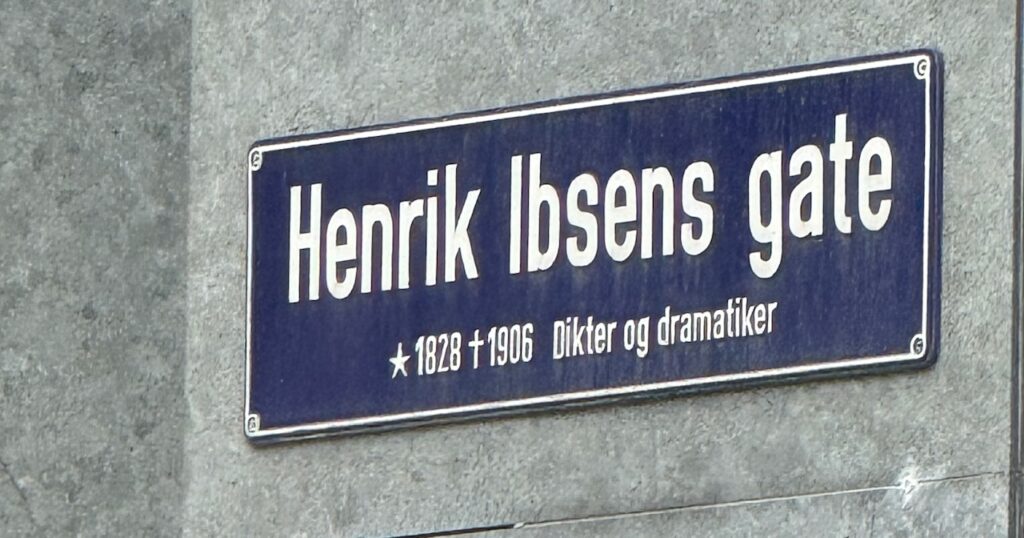
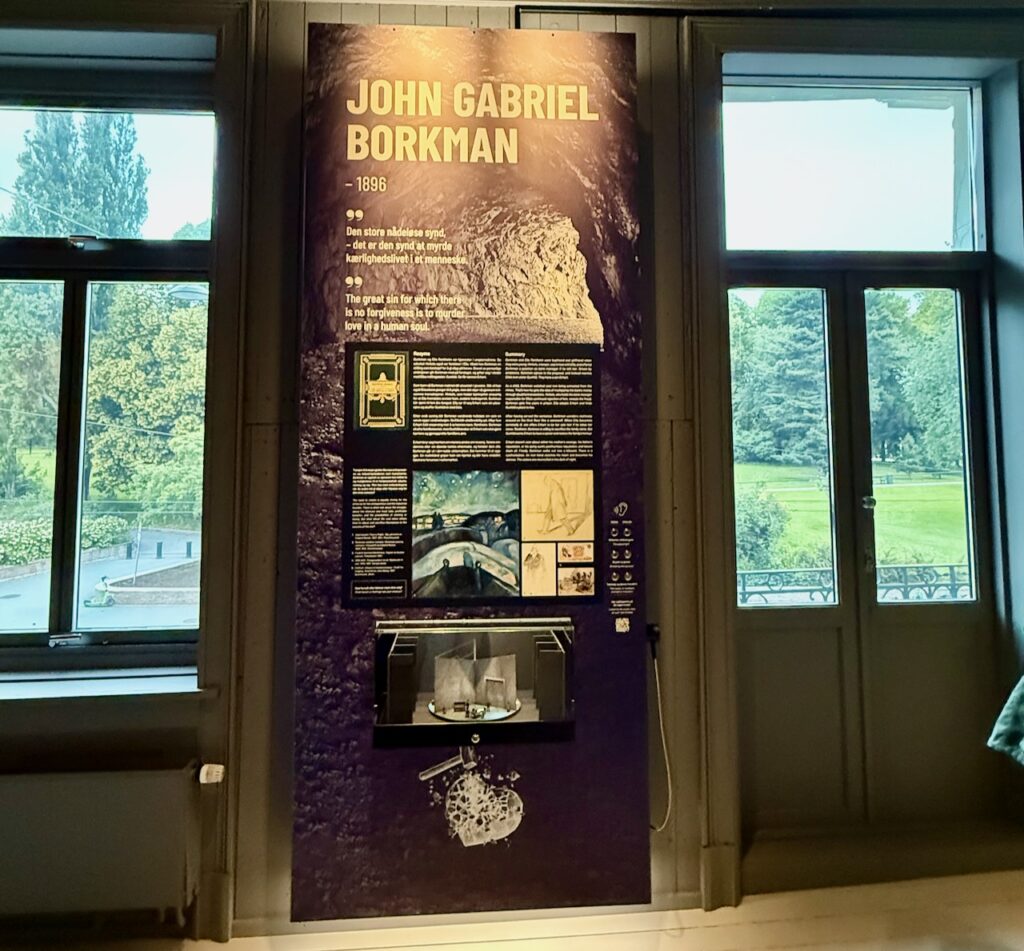
Ibsen spent much of his adult life in voluntary exile from his native country, living mainly in Rome, Dresden, and Munich. He and his wife moved back to Oslo (then called Christiania) in 1891. They purchased their apartment as it was being constructed and influenced many of its features. Suzannah had severe arthritis that caused her great pain and drastically limited her mobility. The apartment was organized and built to accommodate her needs.
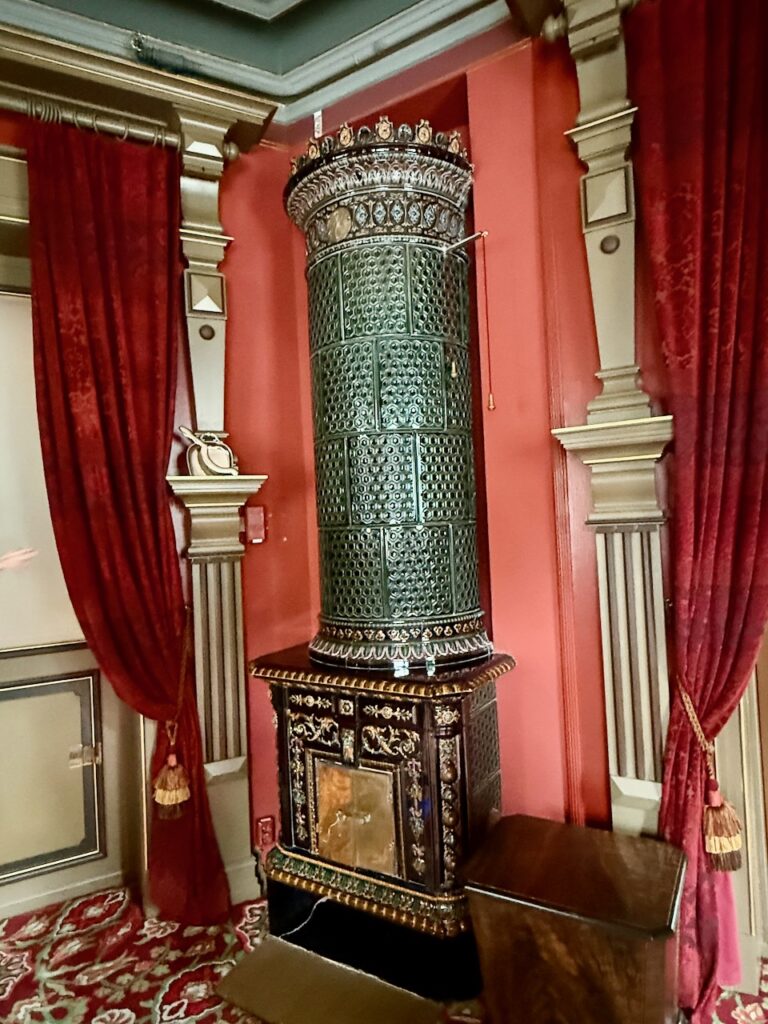
The two rooms at the front of the apartment were richly furnished and decorated to be a sitting room and dining room for guests. Our tour guide referred to these as “the bourgeois rooms.” This ceramic stove from Germany illustrates Ibsen’s desire to demonstrate that he was wealthy enough for such things.
The Ibsens also had a piano. Suzannah’s arthritis prevented her from playing it, but, as our guide explained, a piano was present in most homes as a statement of culture and sophistication. The guide also said that Henrik did know how to play the piano but he choose not to because he thought of music as noise that distracted him from his writing.
The other rooms, where the Ibsens lived, were much plainer. Here are Suzannah’s bedroom and its neighbor, the library. (Many of the rooms are protected by transparent panels, which cause unavoidable reflections in photos. I encourage you to see the museum’s website, where you’ll find better photos and more information about the restoration of the apartment and museum.)
By far the most prominent feature of the apartment is Ibsen’s study, where he spent most of his time working.
The collection of portrayals of Ibsen are reminders that this building contains a museum as well as a home.
© 2025 by Mary Daniels Brown

![Outside of building with sign "Ibsen Museum & Teater[sic]"](https://www.notesinthemargin.org/wp-content/uploads/2025/09/Ibsen-Museum-1024x768.jpeg)
